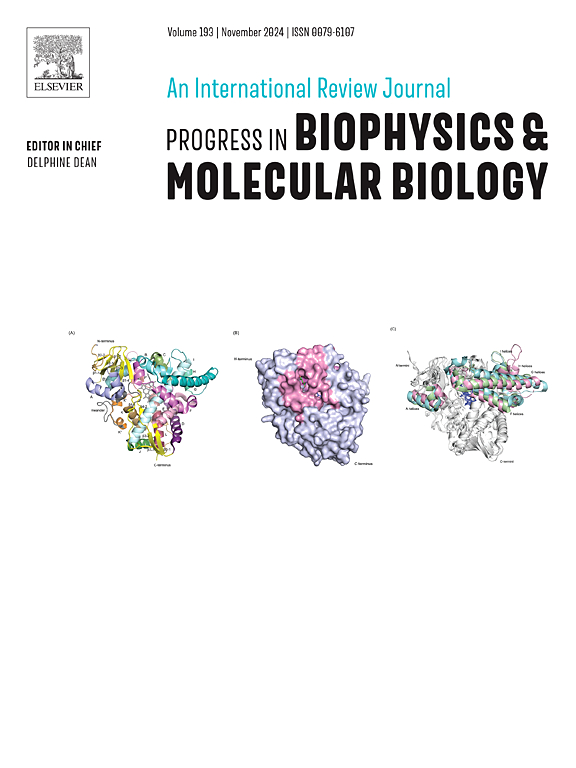From gene editing to tumor eradication: The CRISPR revolution in cancer therapy
IF 4.5
3区 生物学
Q2 BIOCHEMISTRY & MOLECULAR BIOLOGY
Progress in Biophysics & Molecular Biology
Pub Date : 2025-04-16
DOI:10.1016/j.pbiomolbio.2025.04.003
引用次数: 0
Abstract
Cancer continues to be a significant worldwide health concern, characterized by high rates of occurrence and death. Unfortunately, existing treatments frequently fall short of delivering satisfying therapeutic outcomes. Immunotherapy has ushered in a new era in the treatment of solid tumors, yet its effectiveness is still constrained and comes with unwanted side effects. The advancement of cutting-edge technology, propelled by gene analysis and manipulation at the molecular scale, shows potential for enhancing these therapies. The advent of genome editing technologies, including CRISPR-Cas9, can greatly augment the efficacy of cancer immunotherapy. This review explores the mechanism of CRISPR-Cas9-mediated genome editing and its wide range of tools. The study focuses on analyzing the effects of CRISPR-induced double-strand breaks (DSBs) on cancer immunotherapy, specifically by gene knockdown or knockin. In addition, the study emphasizes the utilization of CRISPR-Cas9-based genome-wide screening to identify targets, the potential of spatial CRISPR genomics, and the extensive applications and difficulties of CRISPR-Cas9 in fundamental research, translational medicine, and clinical environments.

从基因编辑到肿瘤根除:癌症治疗中的CRISPR革命
癌症仍然是世界范围内一个重大的健康问题,其特点是发病率和死亡率都很高。不幸的是,现有的治疗方法往往不能提供令人满意的治疗结果。免疫疗法已经开启了实体瘤治疗的新时代,但其有效性仍然受到限制,并带来了不必要的副作用。在分子尺度上的基因分析和操作的推动下,尖端技术的进步显示出加强这些治疗的潜力。包括CRISPR-Cas9在内的基因组编辑技术的出现,可以极大地增强癌症免疫治疗的疗效。本文综述了crispr - cas9介导的基因组编辑机制及其广泛的工具。该研究的重点是分析crispr诱导的双链断裂(DSBs)对癌症免疫治疗的影响,特别是通过基因敲低或敲入。此外,本研究还强调了利用基于CRISPR- cas9的全基因组筛选来鉴定靶点,空间CRISPR基因组学的潜力,以及CRISPR- cas9在基础研究、转化医学和临床环境中的广泛应用和难点。
本文章由计算机程序翻译,如有差异,请以英文原文为准。
求助全文
约1分钟内获得全文
求助全文
来源期刊

Progress in Biophysics & Molecular Biology
生物-生化与分子生物学
CiteScore
8.60
自引率
7.90%
发文量
85
审稿时长
85 days
期刊介绍:
Progress in Biophysics & Molecular Biology is an international review journal and covers the ground between the physical and biological sciences since its launch in 1950. It indicates to the physicist the great variety of unsolved problems awaiting attention in biology and medicine. The biologist and biochemist will find that this journal presents new and stimulating ideas and novel approaches to studying and influencing structural and functional properties of the living organism. This journal will be of particular interest to biophysicists, biologists, biochemists, cell physiologists, systems biologists, and molecular biologists.
 求助内容:
求助内容: 应助结果提醒方式:
应助结果提醒方式:


